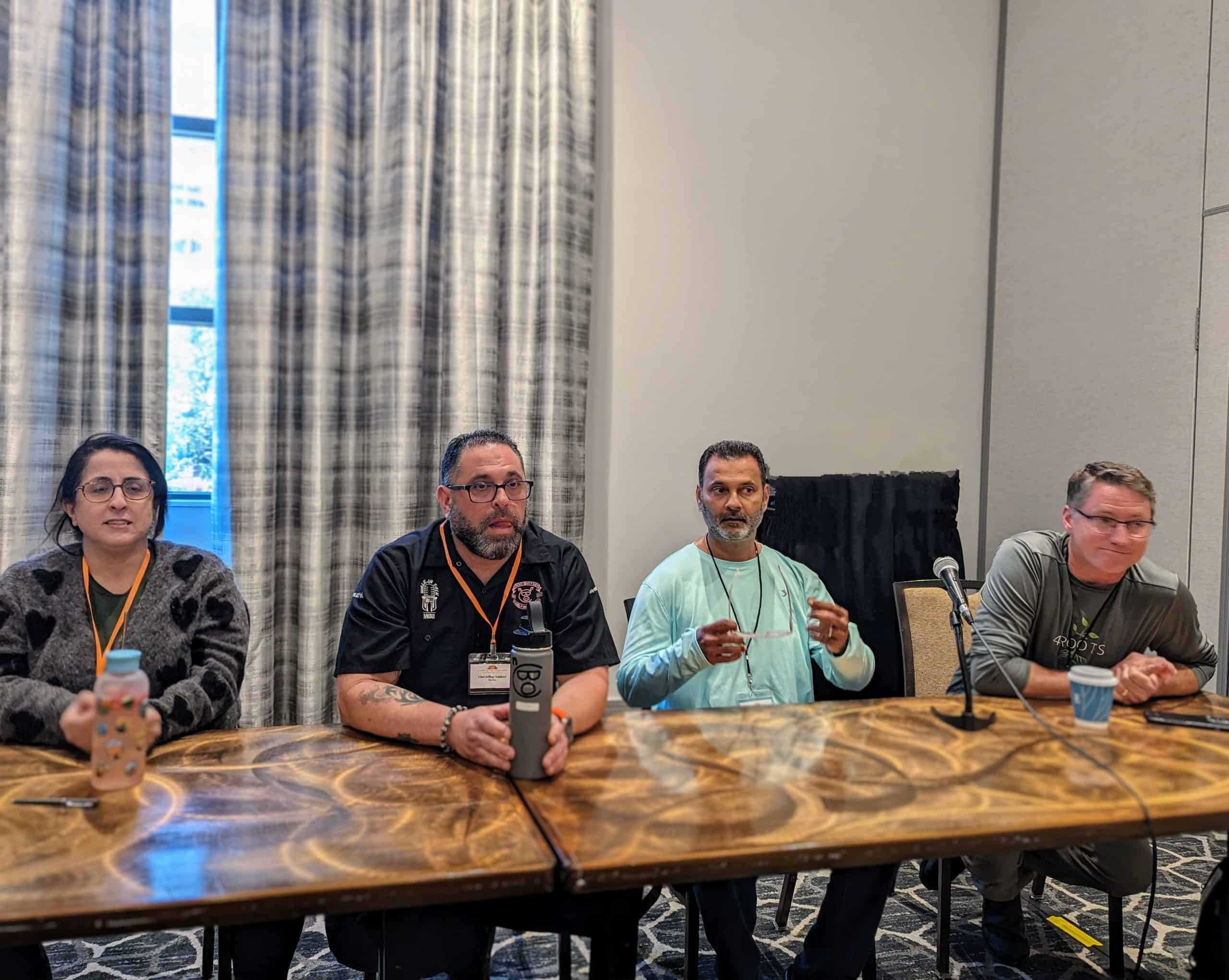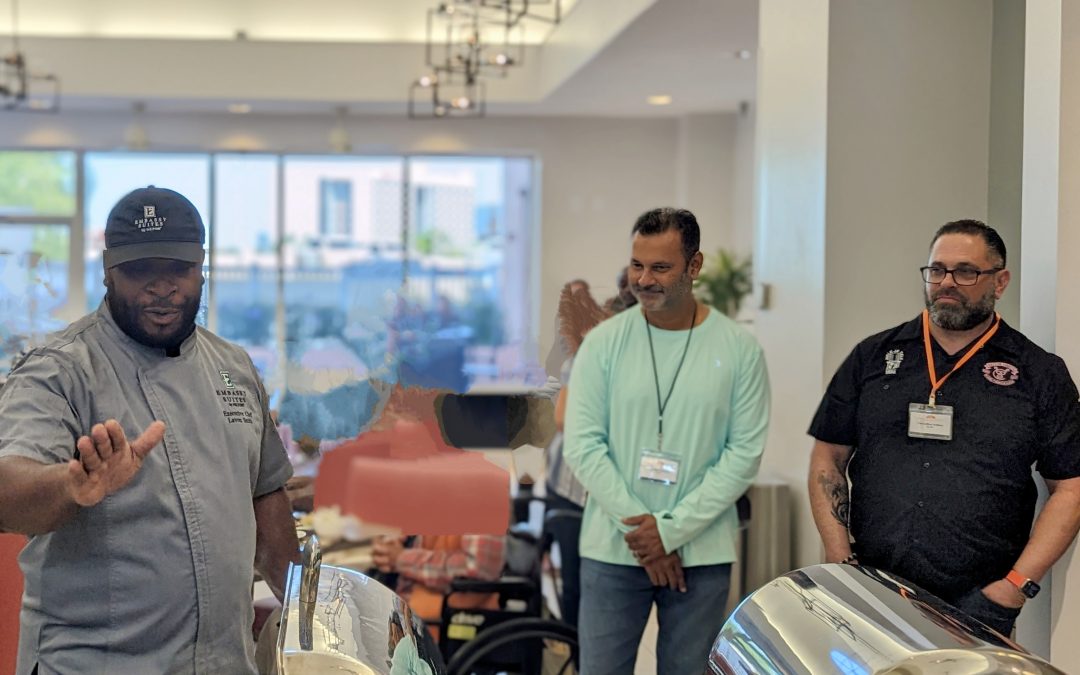The Intersection of Podiatry and Gastronomy:
A Tale of Culinary Healing
Welcome to a vibrant exploration of Podiatric Lifestyle Medicine and the Food as Medicine philosophy, with a spotlight on the extraordinary work of chefs and medical professionals who craft recipes for wellness. Today, we’re delving into the synergies between culinary arts, health, and sustainability, featuring insights from renowned Chef Hari Pulapaka and podiatrist Jenneffer Pulapaka, DPM.
The Alchemy of Local Foods in Lifestyle Medicine
A spoonful of your grandmother’s soup or a slice of freshly baked lasagna – comfort foods have always been medicine for the soul. But what if they could also be medicine for the body? This is the essence of Food as Medicine, a concept that’s been around since the time of Hippocrates, but one that’s gaining momentum in modern healthcare. Through alternative approaches like Podiatric Lifestyle Medicine, physicians can demonstrate significant health improvements by altering patients’ diets.
The Art of Healthy Eating with Chef Hari Pulapaka
Chef Hari Pulapaka embodies the spirit of this movement. Moving to the United States from Mumbai, India, nearly four decades ago, Hari has interwoven his background with his culinary expertise, crafting dishes that not only tantalize the tastebuds but also contribute to one’s well-being. A vegetarian by upbringing, Hari’s kitchen is a laboratory where global flavors meet local produce, creating dishes that support both personal health and the planet’s vitality.
As we savor this food for thought, let’s remember that food’s greatest gift is its ability to unite us – around the table, across cultures, in pursuit of our healthiest selves.
The Panel:
Chef Lavon Smith
Chef Toni Elkhouri
Chef Jeffrey Schlissel
Chef Hari Pulapaka
Chef Josh Taylor

“Plating The Harvest”
In this comprehensive panel discussion involving esteemed chefs and agriculturists at the “Plating The Harvest”, by the Florida Organic Growers Event, various insights and perspectives regarding local produce and its incorporation into culinary practices were brought to the floor. The discussion, moderated by Ricky Lee, highlighted the challenges and opportunities associated with sourcing locally grown ingredients, the evolving landscape of the food industry, and the innovative approaches local food advocates are employing to enhance the farm-to-table movement.
The panelists, ranging from academic-chefs to executive-level culinary experts, shared personal stories and professional experiences that demonstrated the depth of their commitment to sustainability and their passion for infusing local flavors into their cuisines. Chef Lavon, for instance, brought his island heritage into play, while Chef Hari elucidated on his vegetarian background and its influence on his meat dish preparations.
Dialogues with local farmers further illuminated the logistical challenges and potential strategies for better integration of farm products into restaurant menus. Discussions revolved around creating a symbiotic relationship between producers and chefs, ensuring that fresh, local produce finds its way into kitchens in a timely and efficient manner. The session culminated in an extensive Q&A that provided actionable insights and fostered direct communication between various stakeholders in the local food economy.
—
The Q&A
Q: How do you incorporate local ingredients into your dishes, especially those that are less common or have a strong cultural identity?
A: Many chefs draw on their heritage and personal experiences to infuse local ingredients into their meals. For instance, Chef Lavon places his island touch into every dish, and Chef Toni, despite being a vegetarian, cleverly uses vegetables like eggplants to mimic the essence of meat dishes. Most panelists agreed on the importance of storytelling and creating dishes that narrate the journey of the ingredients from farm to table.
Q: What steps can be taken to bridge the gap between local farms and restaurants?
A: Effective communication and forming personal relationships are key. For instance, Chef Lavon suggests face-to-face interactions with farmers to better understand the availability of ingredients and to foster a mutual understanding. Some chefs emphasized the significant role of distribution systems and the need for middle persons who can effectively connect the product from the farm to the kitchen. Furthermore, education about seasonality and the virtues of local produce can help forge stronger ties between chefs and farmers.
Q: As a chef, how can you influence consumers to try and embrace locally sourced and lesser-known ingredients?
A: Chefs can play a critical role in educating consumers by showcasing unfamiliar ingredients in accessible and familiar dishes. Chef Toni mentions creating approachable dishes and integrating unique ingredients into recognizable formats. Chef Hari stressed that even fine dining chefs derive their final dishes from very simple, basic ingredients, which shows that exclusive cuisine can emerge from the most basic, locally sourced items. Additionally, chefs like Chef Jeffery aim to present the ingredient’s story and flavor profile in a way that entices consumers to appreciate and demand locally sourced foods.
Q: What are the challenges when connecting with local farmers?
A: Communication barriers and logistical issues are common challenges. Chefs suggest face-to-face interaction with farmers to better understand available products and emphasize the need for better distribution systems to facilitate supply to kitchens.
Q: What are the chefs’ favorite local ingredients to source in Florida?
A: Chefs enjoy sourcing and using a variety of local ingredients, such as citrus fruits, dairy products, and seafood. They also appreciate uniquely Floridian ingredients that inspire them to create diverse, delicious dishes.
Q: What strategies can be employed to introduce uncommon local produce to consumers?
A: Suggestions include establishing partnerships, educational cooking classes, recipe development, social media promotion, and engaging chefs to create dishes using these ingredients to showcase them at farmer’s markets or special events.
Q: How do chefs deal with the seasonality of agricultural products?
A: Chefs typically plan menus around seasonal availability and may enter into contracts with farmers to supply certain products. However, the financial stability of restaurants must be considered, making such contracts a balanced affair.
Q: How can we get restaurants to use more locally farmed, lesser-known produce?
A: Encouraging chefs to experiment with new ingredients and approaching culinary schools for potential partnerships may be effective. Creating simple at-home cooking instructions and utilizing influencers to promote these ingredients could help make them less intimidating to consumers.
—
Why Local and Sustainable Makes Sense
In these days of food enlightenment, a tomato isn’t just a tomato. Where it comes from, how it’s grown, and the distance it travels to reach our plates – these factors influence its nutritional value, taste, and environmental footprint.
Buying local slashes the carbon emissions associated with long-distance food transport. It means embracing the bounty of each season, relishing in the sweetness of spring blueberries, the succulence of a summer tomato, or the crispness of a fall cucumber. Local foods taste better –simply put, they’re fresher. And their health benefits of color diversity, giving our meals a nutritional upgrade.
Cultural diversity is another vibrant thread in this culinary tapestry. Thanks to chefs like Hari Pulapaka, forgotten vegetables and foreign fruits are rediscovered and reimagined, exciting our palates with new tastes and inviting us to celebrate the multitude of flavours our world has to offer.
Bridging the Gap Between Farm and Fork
While the demand for locally sourced foods in restaurants is significant, the barriers between farmers and chefs often lie in distribution. Communication and logistics can be nightmarish, and farmers and chefs work opposite schedules and have little time to foster relationships.
Chef Lavon, for example, stressed the importance of face-to-face interactions and suggested that simplifying the distribution specifics could make it easier for hotels and restaurants to connect with local farmers.
Chef Toni brought up a critical point regarding education. Breaking the “corporate conditioning” – the preconceived notion of what’s available and when – could help chefs and consumers embrace the natural seasonality of produce. The challenge doesn’t end with logistics. For Chef Josh 4Roots Farm, advocacy is the key. Creating a strong farmer-chef partnership benefits each player and, ultimately, the community they feed.
The Recipe for a Sustainable Future
In practicing food as medicine, the collaborative efforts between the culinary world and health professionals exemplify the positive outcomes of nurturing such connections. Chefs like Hari and Dr. Jenneffer Pulapaka are innovators in their fields and advocates for a healthier society and planet.
As a collective, we can value food more deeply when we understand its story – and chefs have the unique ability to tell these stories on our plates, using the freshest ingredients from the farm next door.
So, let’s celebrate the passionate farmers, the imaginative chefs, and the healers who bring the food journey full circle. May we all find a bit of medicine in our next meal.
By: Dr. Jenneffer Pulapaka
On the other side of this food revolution is a podiatrist taking lifestyle medicine straight to her patients’ plates. Armed with knowledge from around the globe, she guides her patients to a healthier life, transforming chronic illness into wellness with the power of food. Diseases that can be treated by diet should be treated by no other means.


Recent Comments